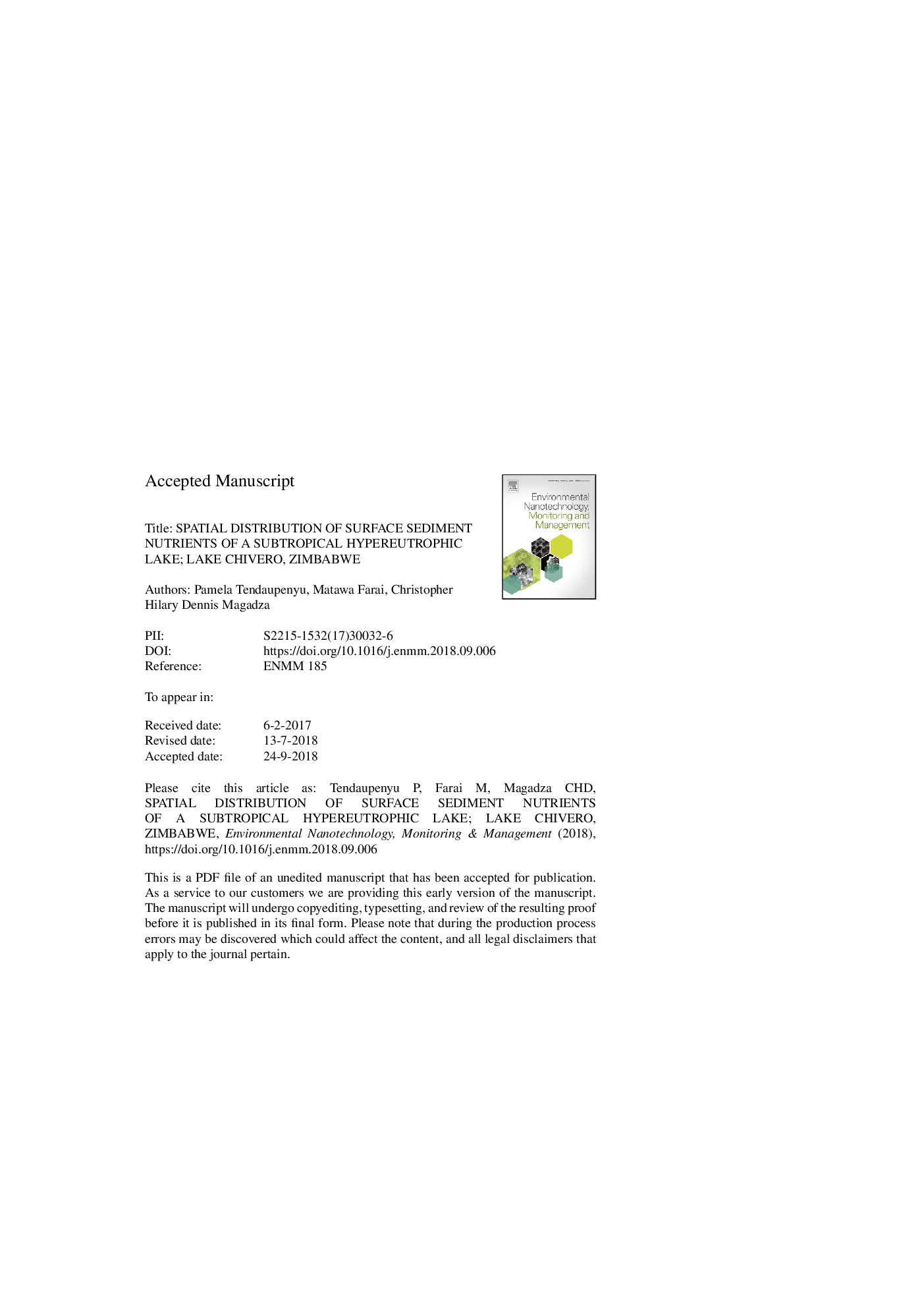| Article ID | Journal | Published Year | Pages | File Type |
|---|---|---|---|---|
| 11033371 | Environmental Nanotechnology, Monitoring & Management | 2018 | 37 Pages |
Abstract
In this paper, we use ordinary kriging, a geostatistical method to create prediction surfaces for 11 nutrients in the surface sediments of Lake Chivero, Zimbabwe within a GIS environment. Interpolation utilised 120 sampling points in the lake. Although a normal distribution in the data is recommended for kriging, non-normal data was preferred for all datasets in this study. For all models developed, cross validation results showed bias acceptable for the creation of prediction surfaces. Also, the correlation between Coefficient of Variation (CV%) of the different data sets and model accuracy in terms of Relative Root Mean Standardised Error (RRMSE) was strong (rhoâ=â0.936) and significant (pâ<â0.05), thus, as variation within data sets increased, model accuracy decreased. Kriged surfaces for all nutrients except for nitrates indicated highest nutrient concentration within the depositional central and north eastern parts of the lake. Nitrates, on the other hand, indicated high concentrations in the shallow shoreline areas of the lake. Total organic carbon levels were high throughout the lake owing to the high discharge of partially treated and raw sewage effluent into the lake as well as the contribution of the decomposing planktonic rain from the lakes productive waters. The distribution of iron in the lake sediments indicated the occurrence of the nutrients in bands suggesting the influence of the local geology on the sediment iron levels. The prediction maps generated a visual picture of trends of the lake wide distribution of nutrients, necessary for targeted sediment contamination remediation activities in Lake Chivero.
Related Topics
Life Sciences
Environmental Science
Environmental Chemistry
Authors
Pamela Tendaupenyu, Farai Matawa, Christopher Hilary Dennis Magadza,
